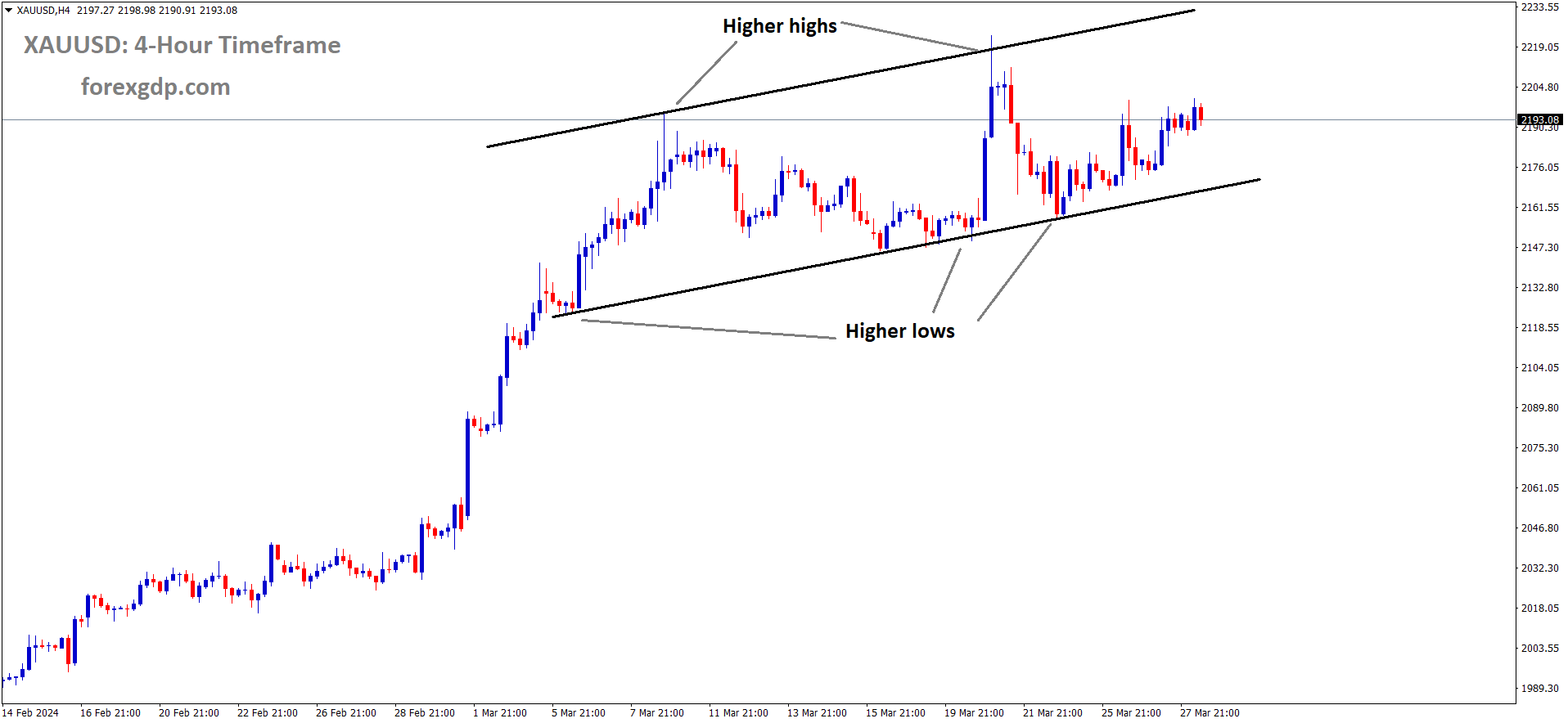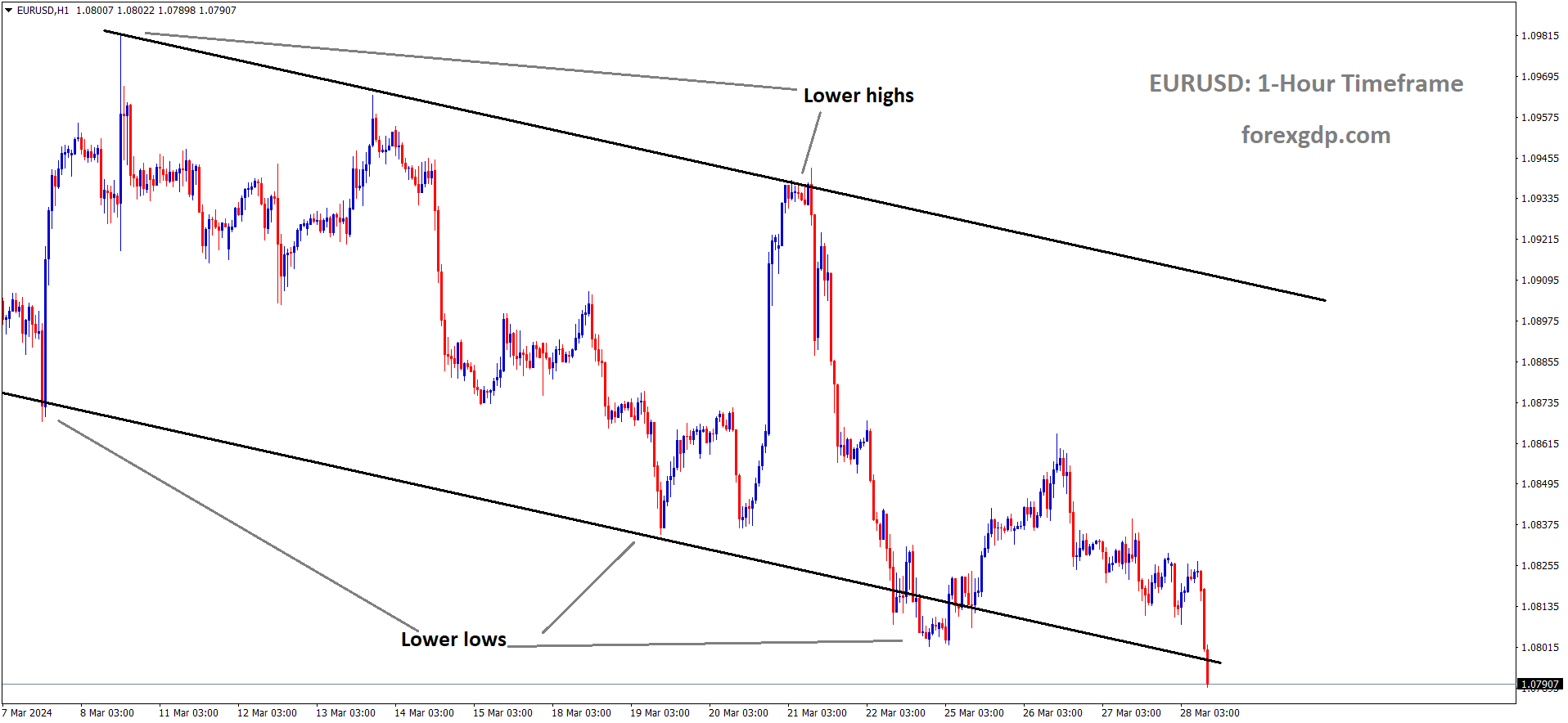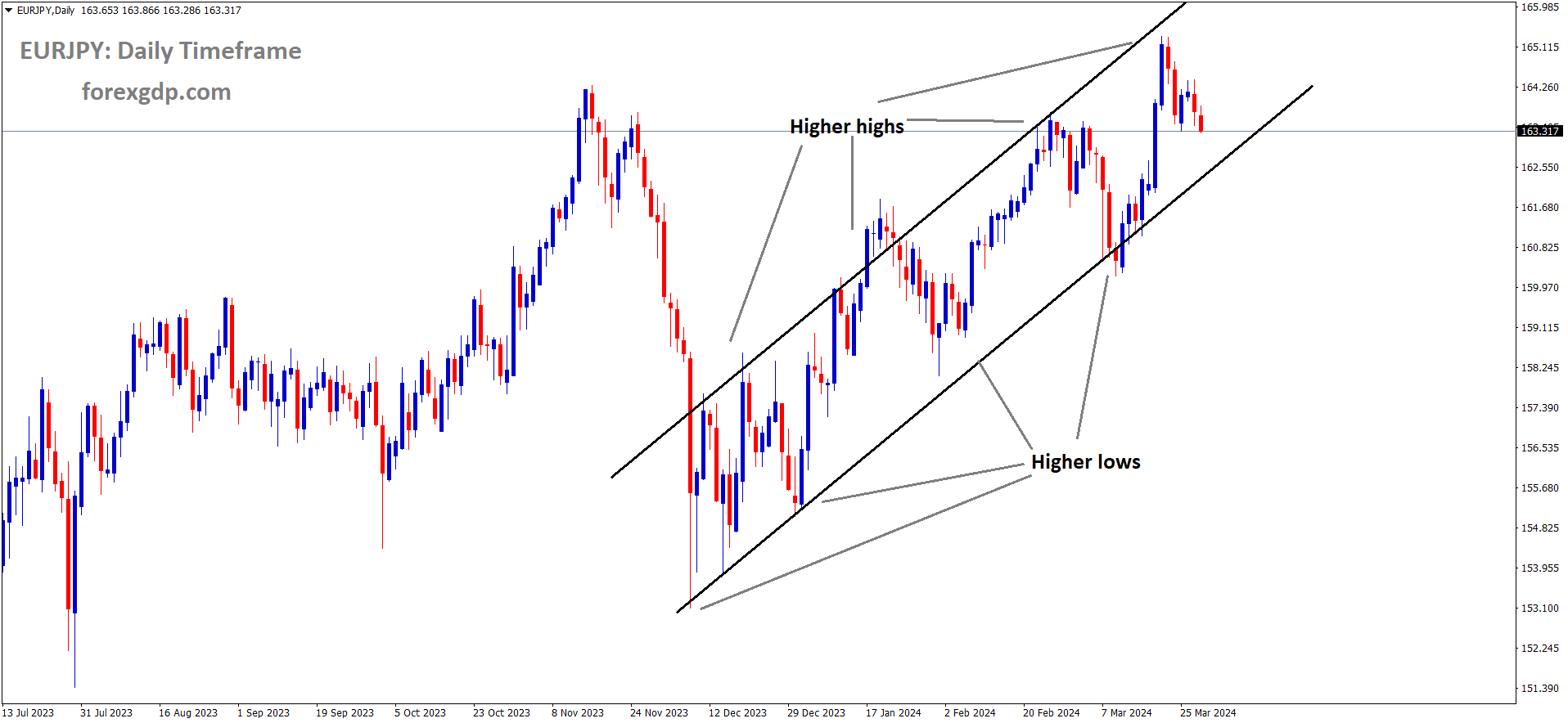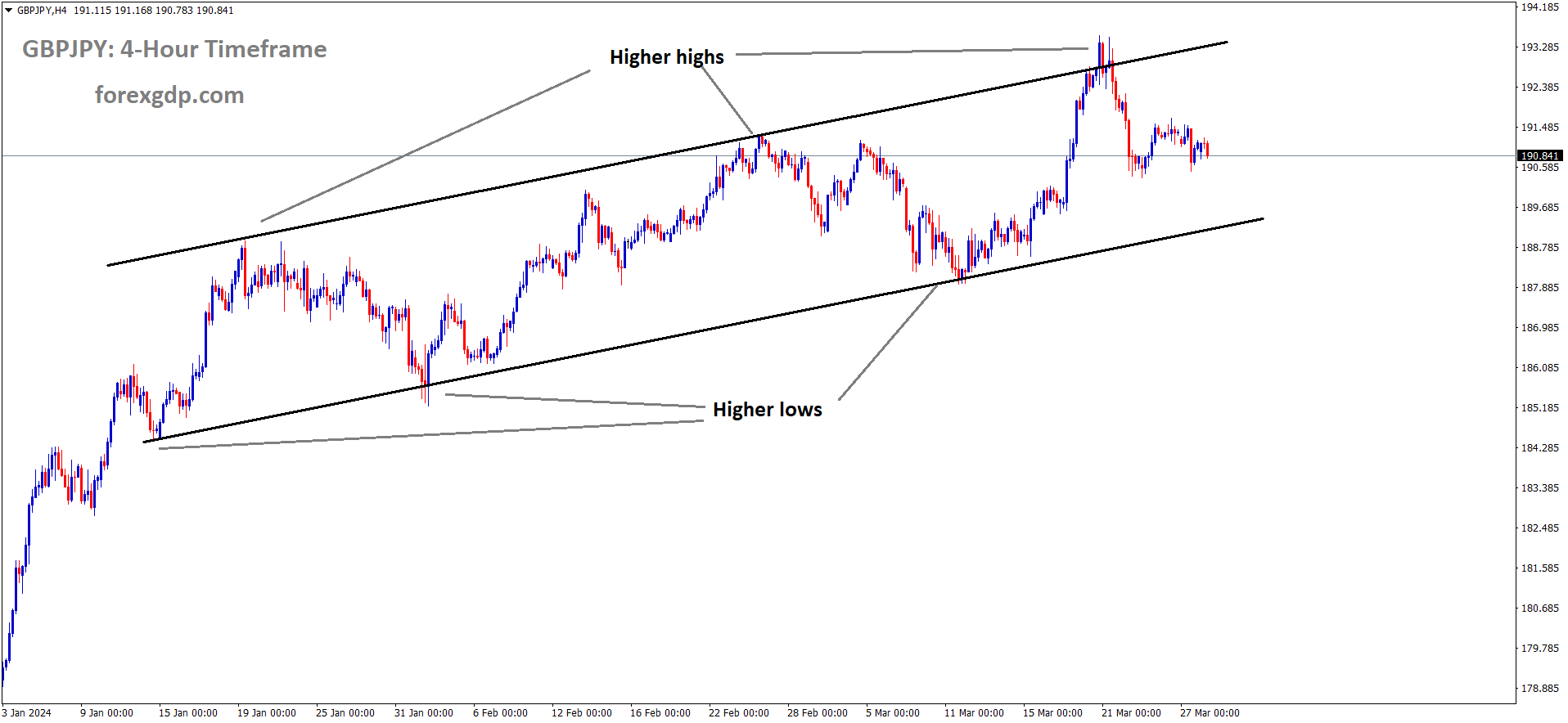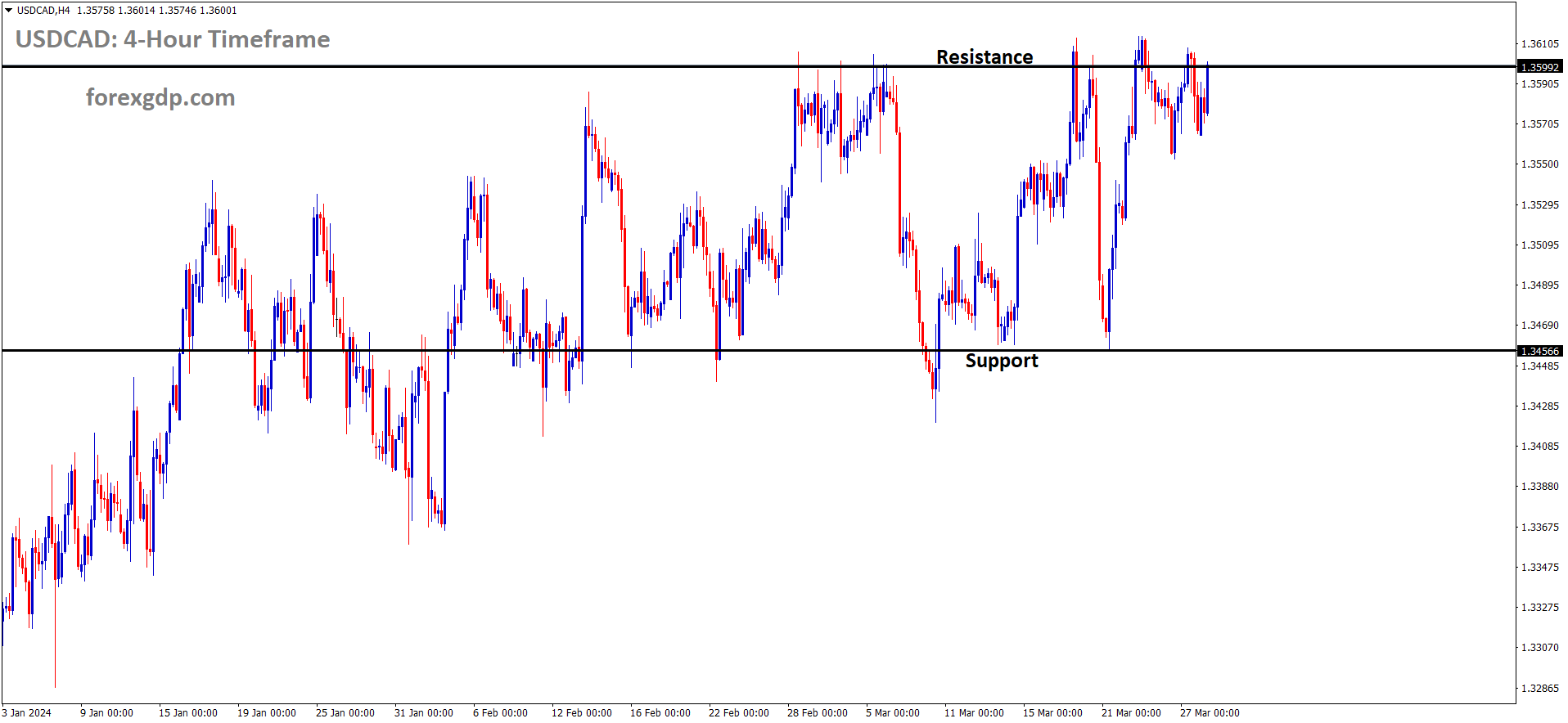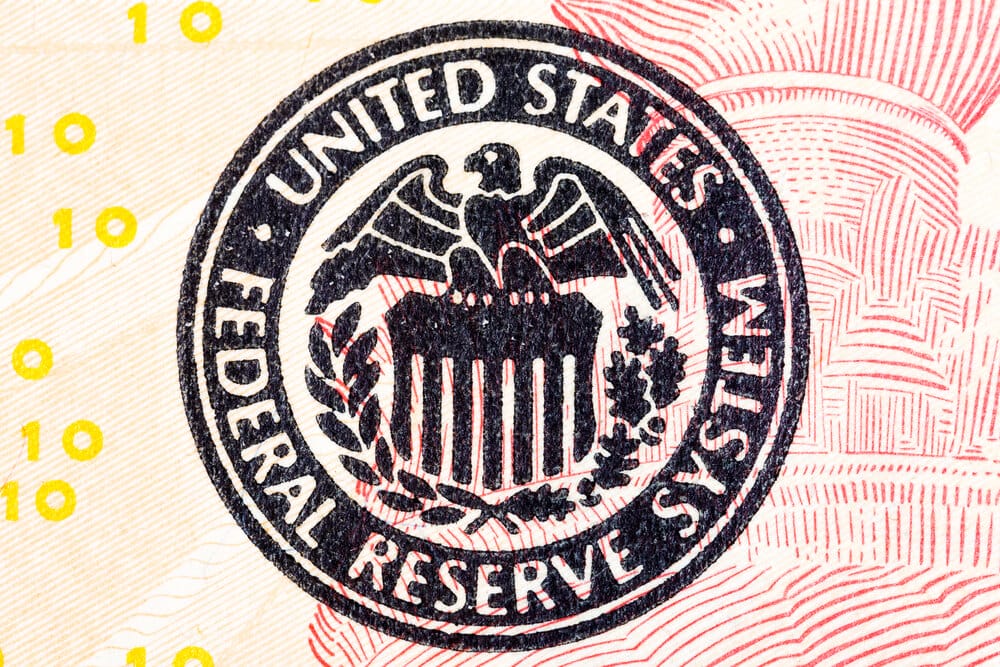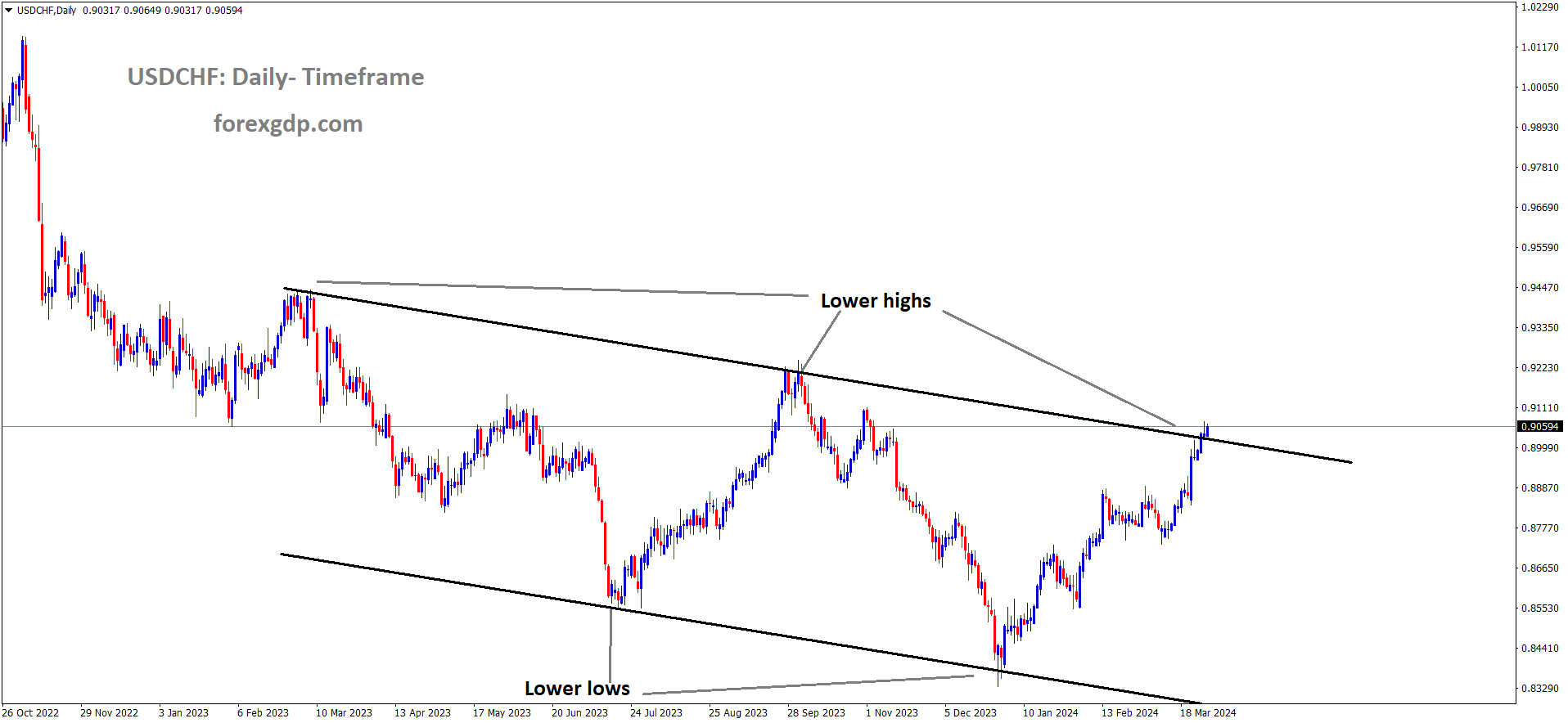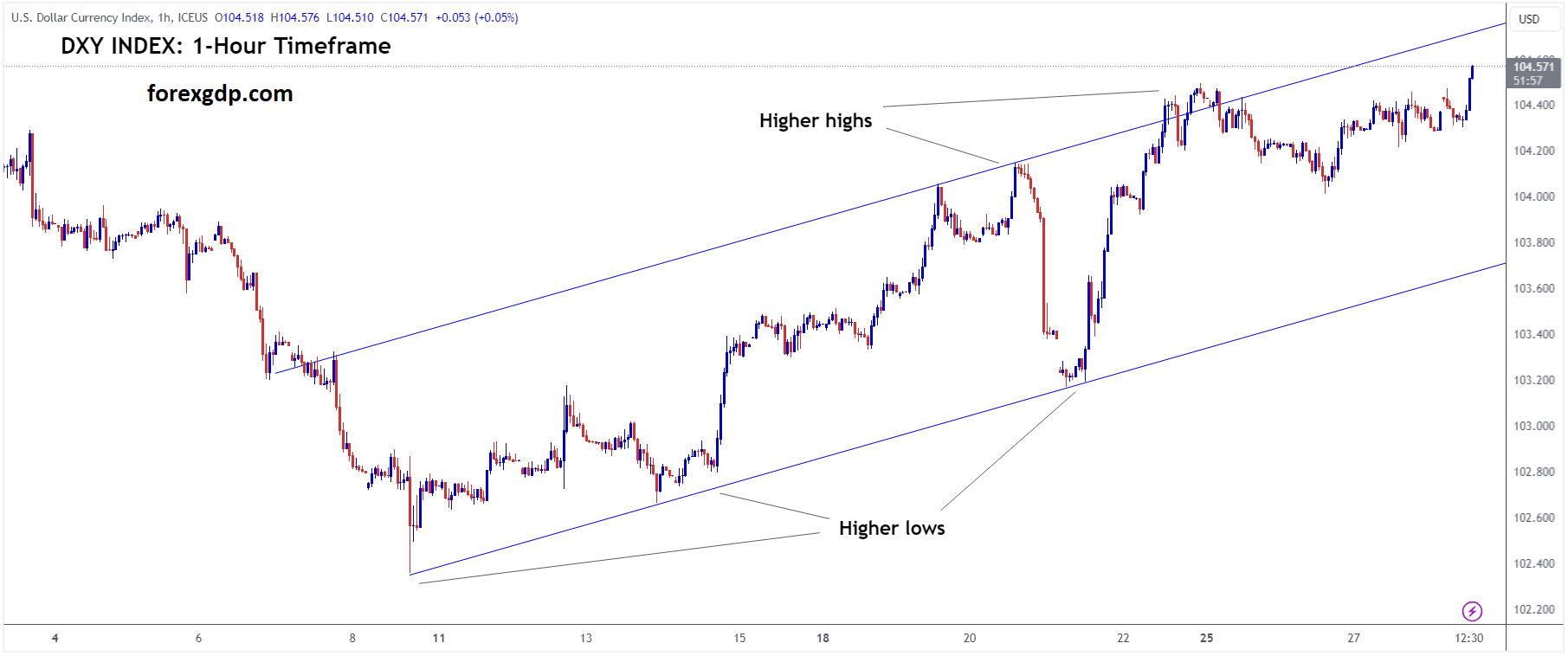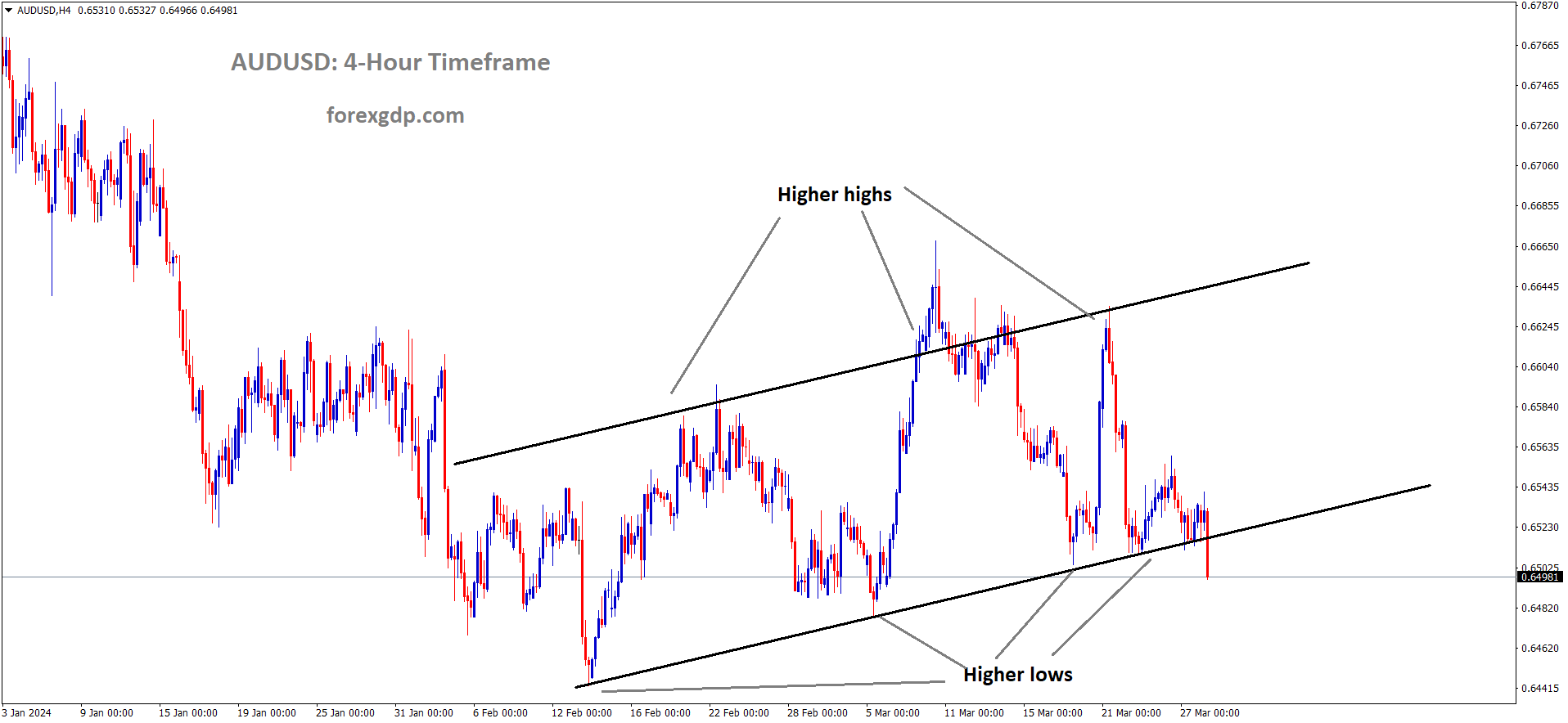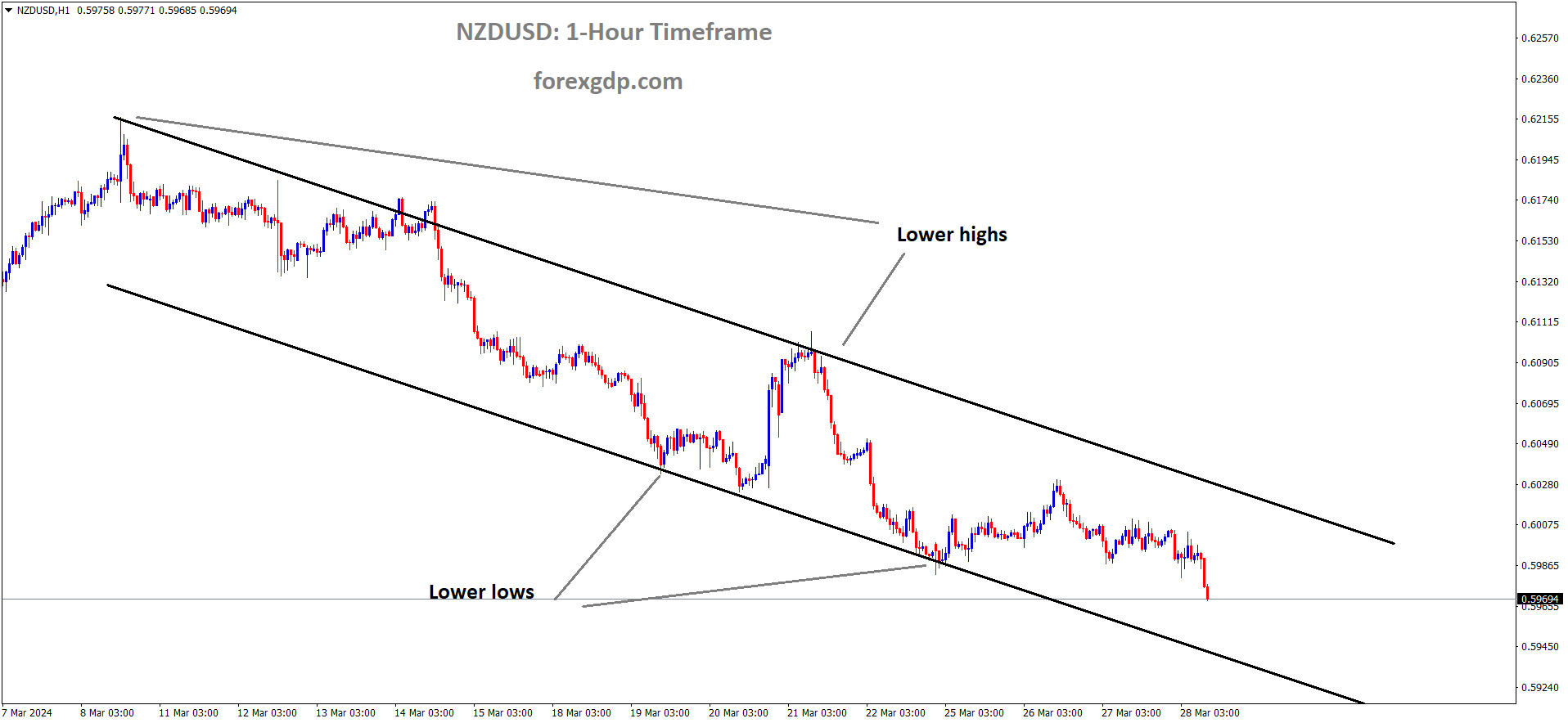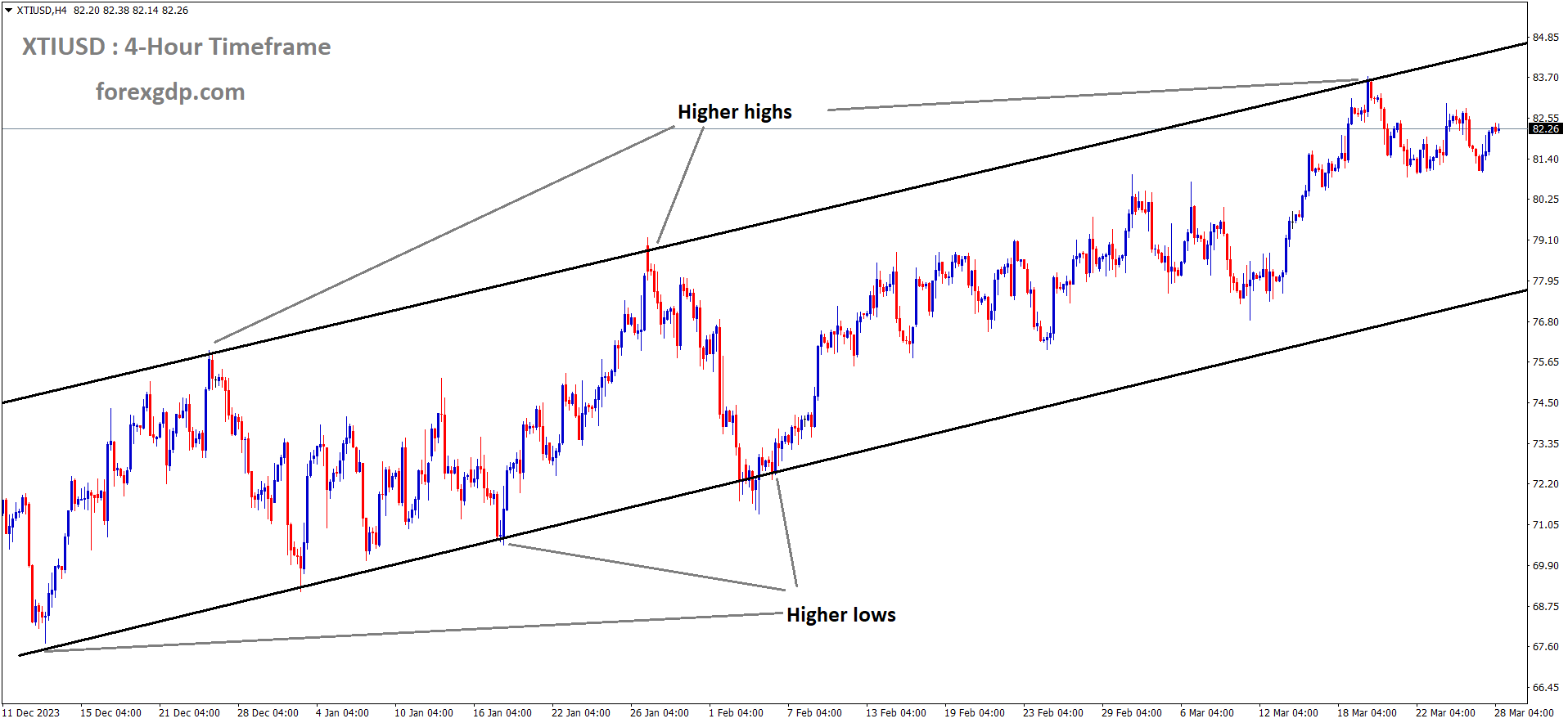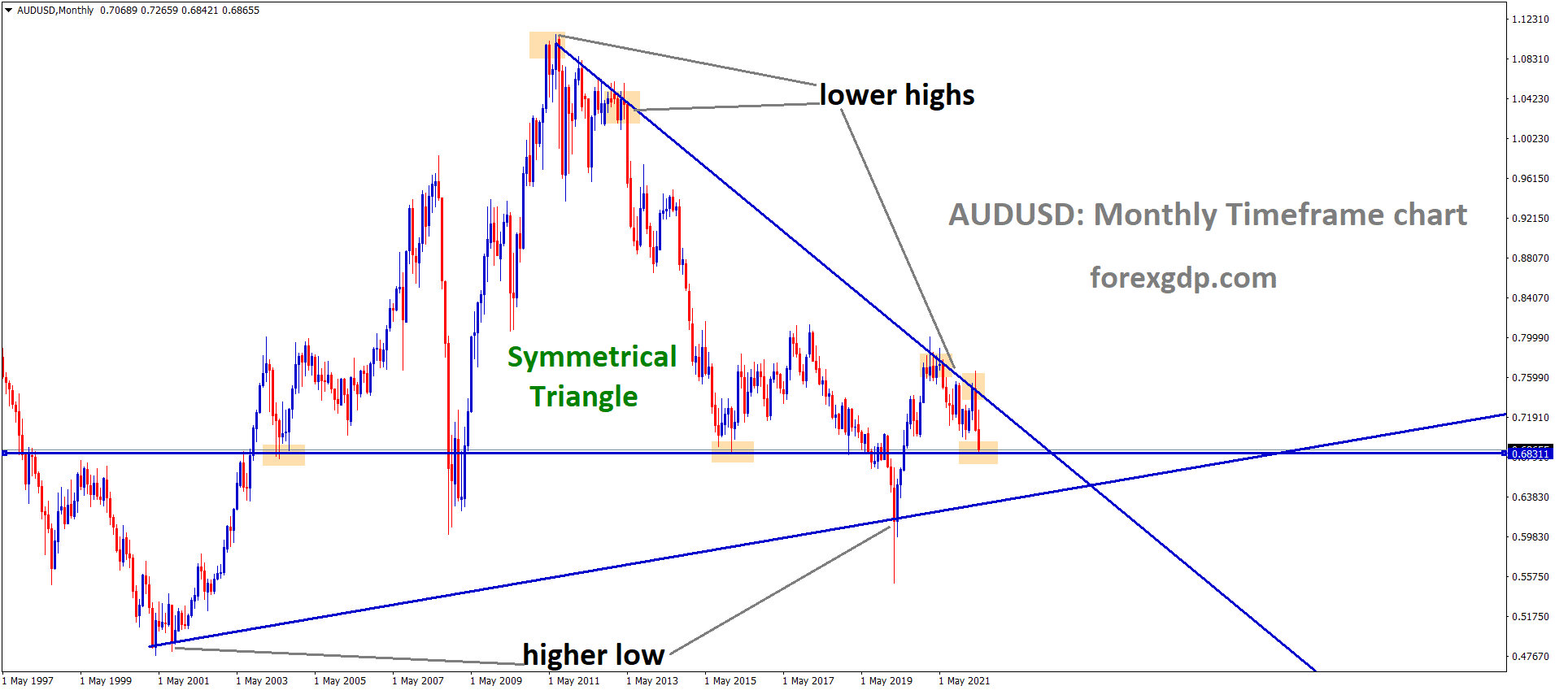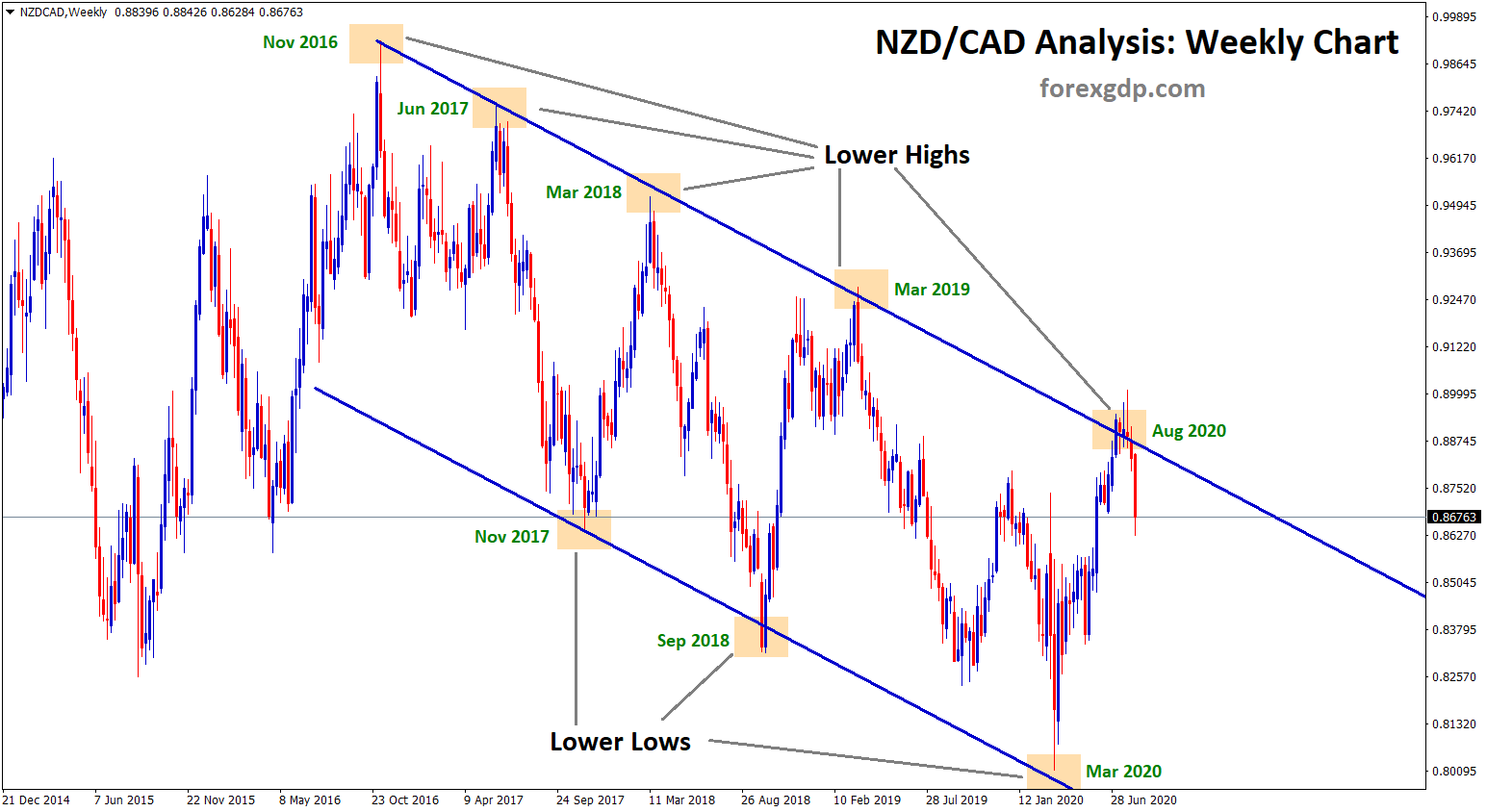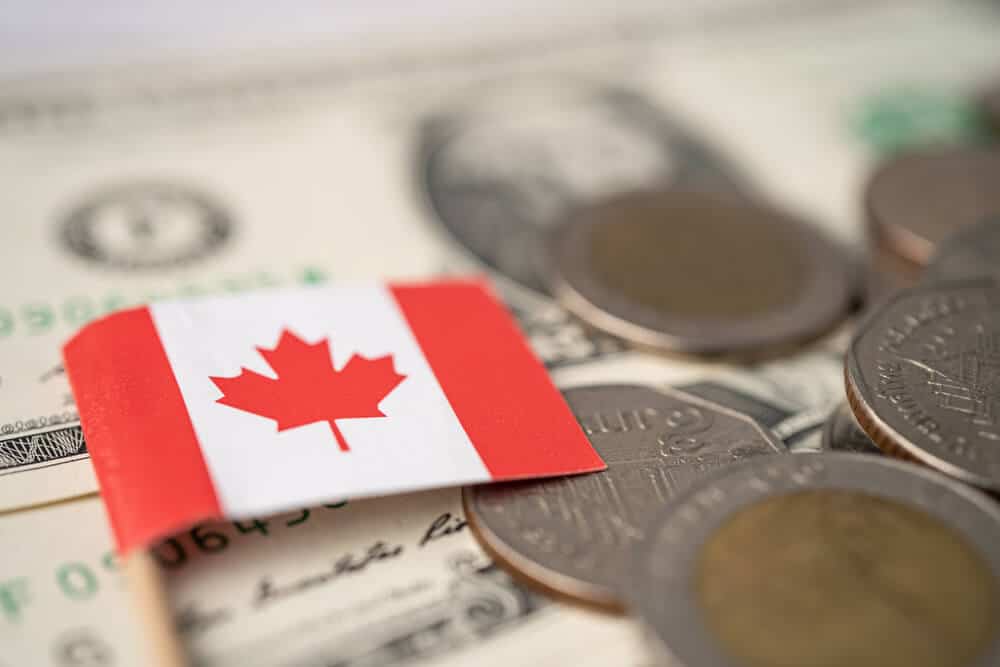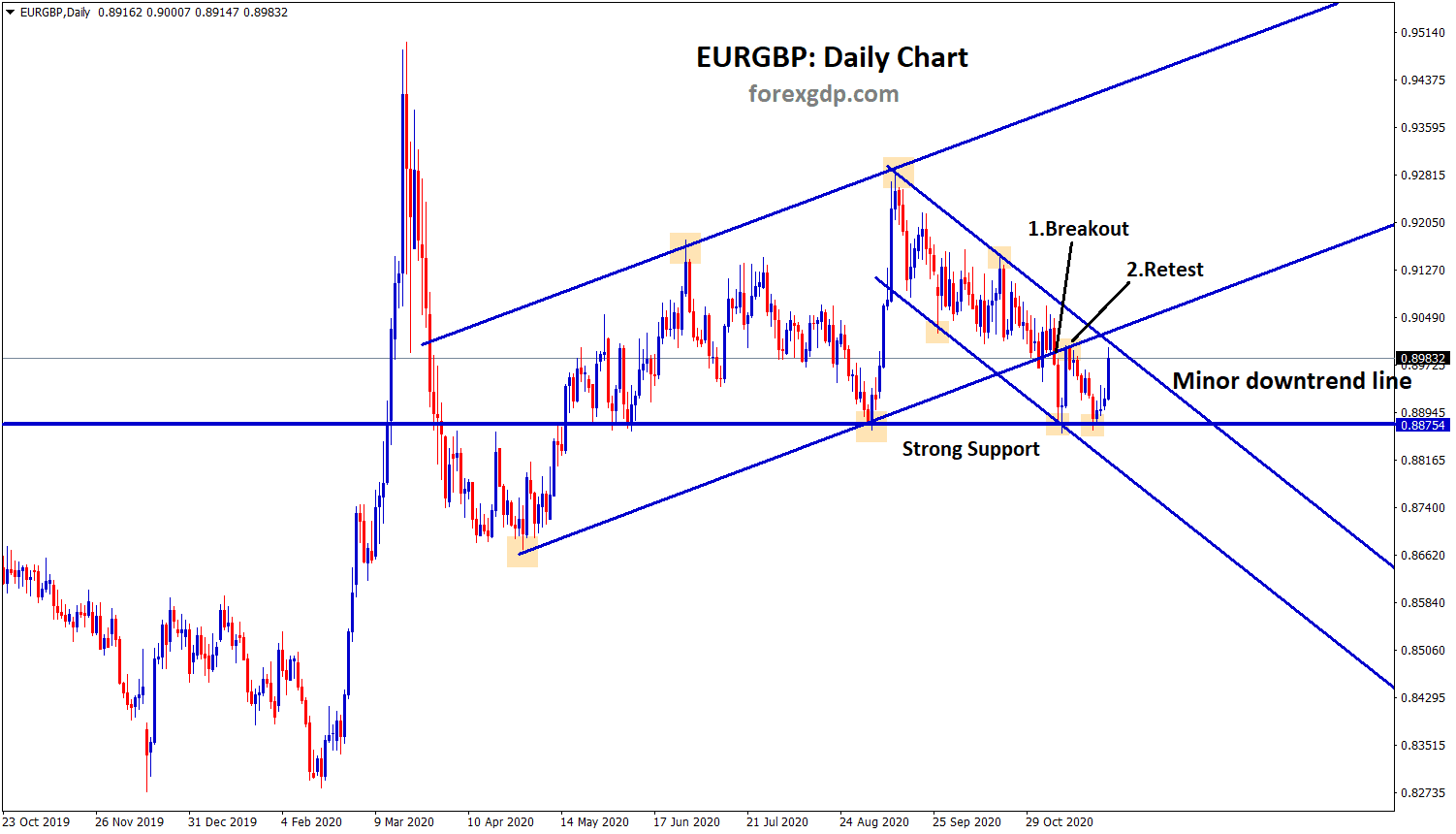XAUUSD Gold price is moving in an Ascending channel and the market has rebounded from the higher low area of the channel
XAUUSD – GOLD price nears weekly high, bulls eye sustained break above $2,200
The Gold prices are moving in the flat ahead of Q4 US GDP data. US FED Christopher Waller said on Thursday FED is not in hurry for cutting rates in the near term, if inflation going down we do take action on rate cuts. Temporary recent readings is not taken into consideration. This speech makes boosting for Dollar against Gold.
This struggle is attributed to the hawkish comments made by Federal Reserve (Fed) Governor Christopher Waller on Wednesday, which have dampened hopes for rate cuts and acted as a hindrance for the non-yielding yellow metal.
Although the US central bank had previously projected a less restrictive monetary policy going forward and indicated its intention to implement interest rate cuts totaling 75 basis points in 2024, Waller’s remarks have had a cooling effect on expectations for imminent rate reductions. Consequently, this has restrained the bullish sentiment among US Dollar (USD) traders and provided some support to the gold market.
Furthermore, amidst a softer risk tone prevailing in the market, there is continued demand for safe-haven assets, including gold, which serves to limit any substantial downward correction in its price. Traders are likely to adopt a cautious approach and await further guidance regarding the Fed’s stance on interest rates before committing to significant directional moves in the gold market.
The focus of market participants remains fixed on the upcoming release of the US Personal Consumption Expenditures (PCE) Price Index on Friday, as it is considered the Fed’s preferred measure of inflation. Meanwhile, Thursday’s economic calendar in the US will be closely monitored for potential trading opportunities, with key releases including the final Q4 GDP print, Weekly Initial Jobless Claims, Pending Home Sales, and the revised Michigan Consumer Sentiment Index.
Additionally, Waller’s remarks on Wednesday underscored his reluctance to hastily implement rate cuts despite recent spikes in inflation, thereby boosting the strength of the US Dollar and impeding the upward momentum of gold prices. However, he also acknowledged that anticipated progress in curbing inflation could prompt the Fed to initiate interest rate cuts later in the year, a development that could potentially support the price of gold in the future.
Moreover, the Fed’s projection of three interest rate cuts by the end of the year, each amounting to 25 basis points, has led to market speculation about the timing of the first rate reduction, with June’s Federal Open Market Committee (FOMC) meeting being considered a likely scenario.
Geopolitical tensions arising from the prolonged conflict between Russia and Ukraine, as well as ongoing conflicts in the Middle East, are expected to provide additional support for gold prices by maintaining demand for safe-haven assets.
In summary, the current environment in the gold market is characterized by a delicate balance between hawkish signals from the Fed, ongoing geopolitical risks, and market anticipation of future monetary policy actions, all of which are influencing the near-term trajectory of gold prices.
EURUSD – German Retail Sales fall 2.7% YoY in Feb vs. -0.8% expected
The German Retail sales data for the month of February came at -1.9% from -0.40% drop in January and 0.30% increase is expected. YoY data came at -2.7%in February month from -1.4% drop in January month, EURUSD dragged down after the downbeat retail sales data in major Euro zone Hub.
EURUSD is moving in the Descending channel and the market has reached the lower low area of the channel
In February, Germany’s Retail Sales declined by 1.9% compared to the previous month, marking a slowdown from the 0.4% decrease recorded in January, as per the official data released by Destatis on Thursday. This data fell short of market expectations, which anticipated a 0.3% increase.
Furthermore, Retail Sales in the Eurozone’s largest economy saw a year-on-year drop of 2.7% in February, contrasting with a 1.4% annual decline reported in January. This figure significantly undershot the forecast of -0.8%.
EURJPY – stays under 164.00 amidst BoJ intervention concerns.
The Japanese Yen is little stronger ahead fears of FX Intervention by BoJ, BoJ Officials repeatedly said we donot allowed excessive FX Moves by Speculations, only moved by Fundmentals we allowed.
EURJPY is moving in an Ascending channel and the market has fallen from the higher high area of the channel
The Bank of Italy Governor Fabio Panetta said ECB can cut the rates if inflation continuous towards 2% target.
Concerns about potential intervention by Japanese authorities in the foreign exchange market contribute to the cross’s decline.
Japan’s Chief Cabinet Secretary Yishimasa Hayashi’s remarks about closely monitoring and considering options to address excessive currency movements add to the fear of intervention. This sentiment aligns with statements from top currency diplomat Masato Kanda, indicating a readiness to respond to disorderly FX fluctuations. Such concerns bolster the Japanese Yen (JPY) and restrain the EUR/JPY’s upward movement.
Meanwhile, the Euro (EUR) faces headwinds due to increasing speculation that the European Central Bank (ECB) may reduce interest rates in June. Recent statements from ECB officials, including Yannis Stoumaras and Bank of Italy Governor Fabio Panetta, suggest a higher likelihood of a rate cut as inflation trends lower, nearing the 2% target.
Market focus shifts to upcoming economic data releases, including German Retail Sales figures expected to decline by 0.8% YoY in February. Additionally, attention will be on the German Unemployment Change and Italian Producer Price Index (PPI). Traders await the Tokyo Consumer Price Index (CPI) for March on Friday, with stronger-than-anticipated data potentially boosting the JPY against the EUR.
GBPJPY – dips near 191.00 after UK GDP data
GBP Q4 GDP data contracted 0.30% QoQ and 0.20% YoY today, this data shows Bank of England may be cut the rates in the June month due to Economy slowdown more than expected after the higher rates implementation. GBP Pairs moved down after the data printed.
GBPJPY is moving in an Ascending channel and the market has reached the higher low area of the channel
The GBP/JPY cross remains in negative territory for two consecutive days, hovering around the 191.00 level on Thursday. Dovish remarks from the Bank of England (BoE) are exerting selling pressure on the Pound Sterling (GBP).
According to the latest data from the Office for National Statistics released on Thursday, the UK Gross Domestic Product (GDP) for the fourth quarter contracted by 0.3% QoQ and 0.2% YoY. Both figures were in line with market expectations. The GBP continues to weaken following the UK GDP numbers as markets increase their bets on the Bank of England (BoE) implementing three quarter-point rate reductions this year. BoE Governor Andrew Bailey indicated that interest rate cuts will be ‘in play’ at future BoE policy meetings.
Meanwhile, the potential weakening of the Japanese Yen may be limited amid speculation that the Bank of Japan (BoJ) will intervene in the FX market to prevent disorderly and speculative moves in the currency. Japan’s Chief Cabinet Secretary Yishimasa Hayashi stated on Thursday that he will closely monitor FX volatility and won’t rule out any steps against excessive movements.
Looking ahead, market participants will closely watch the Tokyo Consumer Price Index (CPI) for March, Unemployment Rate, Industrial Production, and Retail Trade data, scheduled for release on Friday. Softer-than-expected Japanese CPI data could complicate the BoJ’s interest rate hike path and put pressure on the JPY. Notably, the UK market will be closed on Good Friday.
USDCAD – fails to capitalize, stays below 1.3600 mark
The Canadian Dollar moved flat ahead of Canadian GDP data and US Q4 GDP is scheduled today. Russia Oil supply shortage makes worry for Oil production. Israel and Hamas Conflict makes added worry for Global oil supply side.
USDCAD is moving in the Box pattern and the market has reached the resistance area of the pattern
My knowledge cut-off date is January 2022.
Traders are awaiting key economic data from the US and Canada for direction.
On Thursday, focus is on the release of Canada’s monthly GDP report and the final US Q4 GDP print. Additionally, data like Initial Weekly Jobless Claims, Pending Home Sales, and the revised Michigan Consumer Sentiment Index could influence the USD, providing short-term trading opportunities for USD/CAD.
Federal Reserve (Fed) Governor Christopher Waller’s hawkish comments overnight tempered expectations of rate cuts, supporting the USD near monthly highs. Despite projecting a less restrictive policy, the Fed signaled potential interest rate cuts in 2024, restraining USD bullishness and acting as a barrier for the currency pair.
Meanwhile, Crude Oil prices gain traction amid concerns of tighter global supply due to reduced Russian production and ongoing Israel-Hamas conflict. This supports the commodity-linked Canadian dollar (CAD) and limits upside potential for USD/CAD.
USDCHF – SNB’s Schlegel: No Swiss Franc Exchange Rate Target
The SNB Vice President Martin Schlegel said there is no target for Swiss Franc Exchange rate and we intervene in the FX markets whenever is necessary. We are closely watching FX Moves in the market.
USDCHF is moving in the Descending channel and the market has reached the lower high area of the channel
The Vice President of the Swiss National Bank (SNB), Martin Schlegel, reiterated the bank’s stance regarding the Swiss Franc (CHF) on Wednesday. Schlegel emphasized that the SNB does not set a specific target for the exchange rate of the Swiss Franc, as reported by Bloomberg.
In his statement, Schlegel highlighted:
– “Swiss National Bank has no target for the franc exchange rate.”
– “The National Bank closely monitors the exchange rate and intervenes in the foreign-exchange market as necessary.”
USD INDEX – Waller: Fed Not Rushing to Cut Rates Despite Persistent Inflation
The FED President Christopher Waller Said there will be no hurry for rate cuts in this year, inflation data remains sticky, Job Numbers at higher pace, Unemployment rate at reasonable rate.
USD Index is moving in an Ascending channel and the market has reached the higher high area of the channel
Once inflation data reached our target with wage decreased to inflation rate, unemployment rate at considerable level, FED has to do rate cuts, we need atleast 6 months data for inflation to target of 2% for rate cut considerations.
Federal Reserve Governor Christopher Waller made remarks on Wednesday, emphasizing that recent weak inflation data supports the Fed’s decision to hold off on cutting its short-term interest rate target, as reported by Reuters.
Key statements from Waller include:
– “There is no rush to cut the policy rate.”
– “Fed may need to maintain the current rate target for longer than expected.”
– “We need to see more progress in inflation before considering a rate cut.”
– “At least a couple of months of data are needed to ensure inflation is heading towards 2%.”
– “I still expect the Fed to cut rates later this year.”
– “The economy’s strength allows the Fed to assess the data.”
– “Recent data suggests fewer rate cuts may be necessary this year.”
– “The economy is growing at a healthy pace.”
– “Despite progress on inflation, recent data has been disappointing.”
– “Data on jobs has shown mixed messages.”
– “The Fed has made significant progress in lowering inflation.”
– “Pressure on wages has been easing.”
– “I’m uncertain if productivity will continue at the current strong pace.”
– “The economy has supported the Fed’s cautious approach.”
– “The dollar remains the dominant currency.”
– “The economy does not warrant significant rate cuts.”
– “Supply chain issues have improved, positively affecting inflation.”
– “The Baltimore port incident is unlikely to cause major economic disruptions.”
– “Stronger-than-expected economic and inflation data suggest delaying rate cuts.”
– “I see continued strength in economic output and the labor market, while inflation progress has slowed.”
– “Based on these signs, there’s no rush to begin easing monetary policy.”
– “Inflation-adjusted interest rates appear to have risen since Christmas, influenced by various factors.”
– “We need to observe more good inflation data, as we’ve only had two months so far.”
– “The Fed is reacting to data without overreacting, with two more inflation readings before the May FOMC meeting.”
– “There’s no evidence that quantitative tightening has caused rate increases; the balance sheet has a greater impact during times of stress.”
– “The unemployment rate doesn’t need to remain at 3.7% for a soft landing; an increase in unemployment doesn’t necessitate panic.”
AUDUSD – Aus Retail Sales up 0.3% MoM in Feb vs. expected 0.4%
The Australian Retail sales rises to 0.30% MoM in February versus 1.4% Rise in Previous reading, But expected reading is 0.40% MoM. Weaker Retail sales push down Australian Dollar against counter pairs. Thanks to Taylor Swift concert happened in the past month in Australia, People got more new clothes and dining out during this event. So Retail sales soared in February month. Inflation remained higher in Australia for the past 1 year, Public gets more difficulties in spending due to higher rates standing in Australia.
AUDUSD is moving in an Ascending channel and the market has reached the higher low area of the channel
Australia’s Retail Sales, an indicator of consumer spending, increased by 0.3% MoM in February, down from the previous reading of a 1.1% rise, as per official data released by the Australian Bureau of Statistics (ABS) on Thursday. The figure fell short of market forecasts by 0.1%.
NZDUSD – Drops near 0.5990 after weak Kiwi Consumer Confidence
The NZ Business confidence data came down at 22.9 in March month Versus 34.7 in February month, Consumer Confidence data came at 86.4 in February month from 94.5 previous month. At Bao Forum, China Legislator said China stands against Unilateralism and protectionism. We stand for Global economy growth and Friendship with Foreign countries.
NZDUSD is moving in the Descending channel and the market has reached the lower low area of the channel
The NZD/USD currency pair experiences a decline, nearing the 0.5990 level during the Asian trading hours on Thursday, thus halting its previous three-day streak of gains. The New Zealand Dollar (NZD) faces challenges attributed to weaker-than-anticipated key economic indicators domestically, consequently exerting pressure on the NZD/USD pair.
Specifically, the ANZ – Roy Morgan Consumer Confidence index dropped to 86.4 in February from its previous level of 94.5 in the prior month. This decline marked a departure from the highs observed in January 2022. Additionally, Business Confidence also witnessed a decrease, falling to 22.9 in March from the preceding reading of 34.7. It’s noteworthy that Kiwi markets will observe closures on Good Friday and Easter Monday.
Meanwhile, at the Boao Forum for Asia (BFA), Zhao Leji, China’s top legislator, emphasized China’s steadfast commitment to inclusive economic globalization. He articulated China’s stance against unilateralism and protectionism in all forms and reaffirmed the country’s dedication to aligning its development with that of other nations.
In the broader market context, the US Dollar (USD) exhibits subdued momentum as investors await the release of Gross Domestic Product (GDP) Annualized data for the fourth quarter of 2023 from the United States (US) on Thursday. Furthermore, attention is directed towards the release of Personal Consumption Expenditures for February on Friday. The US Dollar Index (DXY) hovers around the 104.30 level. Additionally, US Treasury yields have rebounded after experiencing losses in the previous two sessions, providing support to the US Dollar.
Amidst these developments, market participants eagerly anticipate guidance from the Federal Reserve (Fed) regarding its trajectory for interest rates. However, conflicting viewpoints among members of the Federal Open Market Committee (FOMC) regarding monetary policy easing contribute to uncertainty in the market.
CRUDE OIL – WTI dips near $81.50 on Fed’s hawkish remarks, unexpected rise in US oil inventories
The Crude Oil prices are moved higher due to Stock piles increased to 3.165 Million Barrels from 1.952 million Barrels according to March 22 report by EIA. OPEC+ Nations agreed to cut 2.2 million Barrels per day until June month. Russia so far 12% Oil refinery output down after 7 drone attacks by Ukraine on Russian Oil refineries this month.
Crude oil Price is moving in an Ascending channel and the market has fallen from the higher high area of the channel
Western Texas Intermediate (WTI), a key benchmark for US crude oil, is currently trading around $81.50 on Wednesday. The movement in WTI prices reflects a downward trend, primarily influenced by two significant factors: the resurgence of the US Dollar (USD) and an unexpected surge in US crude and gasoline inventories.
The decline in WTI prices is attributed to the hawkish stance expressed by a prominent policymaker from the US Federal Reserve (Fed) early Thursday. Fed Governor Christopher Waller, known for his hawkish views, emphasized that the central bank is not rushing to lower the benchmark interest rate. Instead, there’s a possibility that the current rate target might be maintained for a longer duration than previously anticipated. This hawkish rhetoric bolstered the USD across various currency pairs. As a result, WTI, being priced in USD, becomes relatively more expensive for holders of other currencies, thus dampening demand and exerting downward pressure on oil prices.
Adding to the bearish sentiment, the Energy Information Administration (EIA) reported a surprising increase of 3.165 million barrels in US crude inventories for the week ending March 22. This unexpected buildup in crude stocks, following a prior decline, further weighed on WTI prices.
Conversely, geopolitical tensions in regions like the Middle East and the ongoing conflicts between Russia and Ukraine serve as potential mitigating factors against the downward trajectory of WTI prices. The heightened tensions raise concerns about potential disruptions in global oil supply, which could offset some of the downward pressure on prices.
Additionally, the decision by the Organization of Petroleum Exporting Countries and its allies (OPEC+) to prolong output cuts of approximately 2.2 million barrels per day until the end of June is expected to play a role in stabilizing oil markets. OPEC+ is anticipated to uphold this production cut policy until a comprehensive ministerial meeting in June.
Looking ahead, oil market participants are closely monitoring the upcoming release of the US Gross Domestic Product Annualized (GDP) data for the fourth quarter (Q4) on Thursday. The market will also focus on the US Personal Consumption Expenditures Price Index (PCE) data for February, along with remarks from Fed Chair Powell, scheduled for Friday. These events are likely to provide further insights into the direction of oil prices in the near term.
Don’t trade all the time, trade forex only at the confirmed trade setups.
Get more confirmed trade setups here: forexgdp.com/buy/

